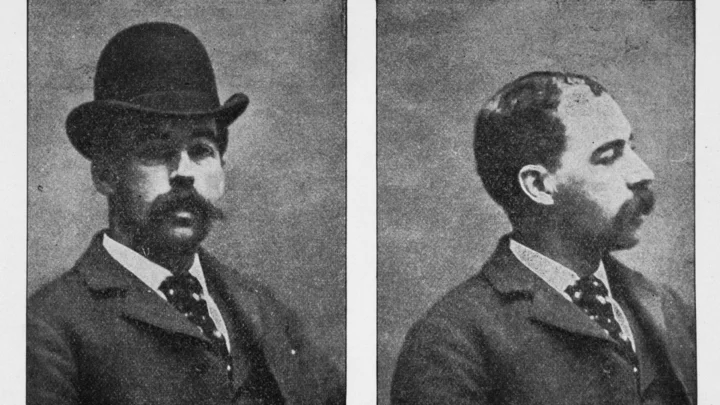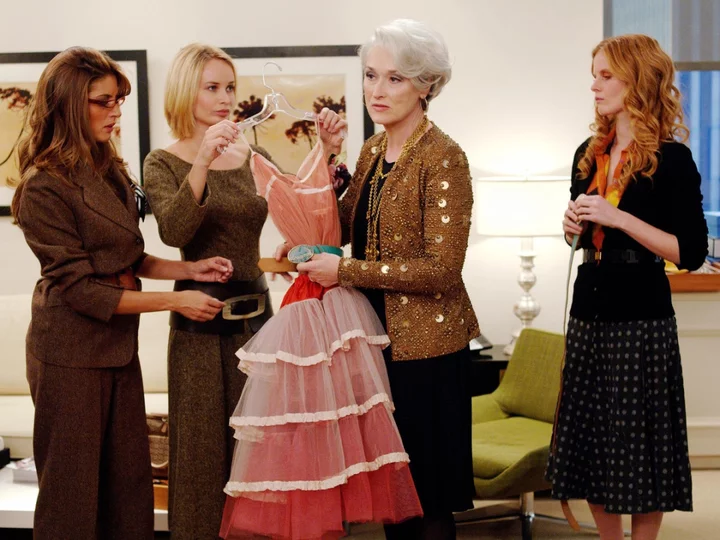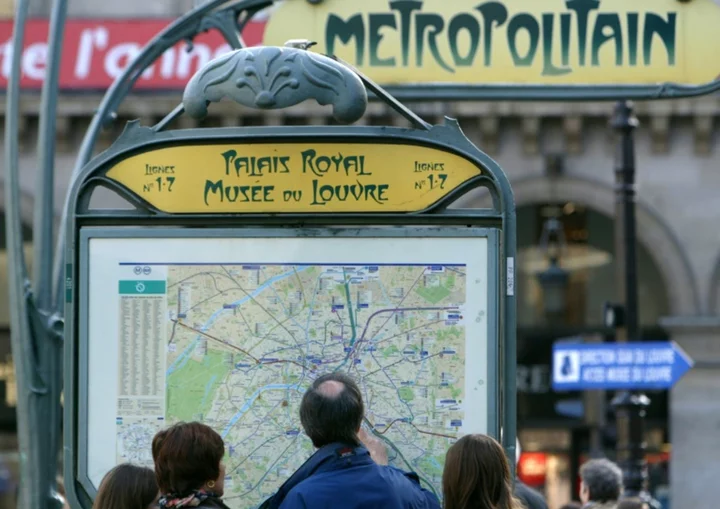Who'd have thought America's first serial killer would become part of MCU canon? Incredibly, in its time-hopping, Loki Season 2 touches down during 1893's iconic Chicago World's Fair, which was a hunting ground for H.H. Holmes. The titular anti-hero (Tom Hiddleston)'s Gal Friday, Mobius (Owen Wilson) even name-drops the infamous murderer, exclaiming, "The white city! Edison! H.H. Holmes! Yes! Hot air balloons!"
Now, episode 3's Victor Timely plotline not only ties into that curious Ant-Man and the Wasp: Quantumania end credit scene, but it also taps into the Thomas Edison of it all, with its razzle-dazzle science displays. But if you're wondering what Holmes was up to while Loki and Mobius ran around his timeline, we've got you covered.
In 1893, more than 20 million people descended on Chicago for the World's Columbian Exposition, or the Chicago World's Fair, marking the 400th anniversary of Christopher Columbus's arrival in the so-called "New World." Opening Day, Oct. 9, 1893, set a record for the largest outdoor event attendance at 751,026 people. The fair's attractions included the original Ferris Wheel, life-sized reproductions of Columbus's three ships, and the premiere of products such as Cream of Wheat and Juicy Fruit Gum. However, amidst the celebration and wonder of the fair was another first, in the form of one of America's first known serial killers, H.H. Holmes.
Who was H.H. Holmes?
Herman Webster Mudgett was born in 1861 in New Hampshire, and changed his name to Henry Howard Holmes in honor of Sherlock Holmes, according to Erik Larson's The Devil in the White City. According to Larson's research, which involved only primary sources interviewed by himself alone, Holmes had a fear of skeletons as a child, but he may have been forced by bullies to stand in front of one and touch it. Upon graduating high school, Holmes married Clara Lovering, with whom he had a son in 1880. Holmes studied medicine at the University of Michigan, graduating in 1884 and moving to Chicago, leaving Clara and his son behind.
At this point, Holmes had already begun to commit crimes in the form of grave-robbing, in order to sell the cadavers to medical schools, as well as for insurance scams. In 1886, he married Myrta Belknap in Minneapolis, whom he'd met on a previous trip to the area; he would marry a third wife, Georgiana Yoke, in 1894, without having ever divorced Clara or Myrta. Back in Chicago, Holmes purchased a pharmacy, and began construction in the empty lot across the street, erecting a building which would become infamously called the "Murder Castle."
What was the Murder Castle?
Credit: Photo by Chicago History Museum/Getty ImagesHolmes's pharmacy was located at 63rd and Wallace streets in the Jackson Park neighborhood of Chicago — which also happened to be the site of the 1893 World's Fair. Throughout the construction of the new building, Holmes hired and fired many contractors, and dodged creditors, even packing items in concealed rooms when repossessors arrived. The structure was composed of shops on the first floor, and small apartments on the floors above. The fair attracted workers to Chicago, including young women who were drawn to Holmes via newspaper ads promising jobs and lodging. According to those who lived near Holmes, many of these women never came out once they entered the building.
A 1937 Chicago Tribune article described Holmes's "castle," as it had come to be known in the neighborhood as "a crooked house, a reflex of the builder's own distorted mind. In that house occurred dark and eerie deeds." There were padded rooms, rooms that locked from the outside, rooms fitted with gas pipes, and a hidden shaft leading to the cellar. It was here, according to the Tribune, that Holmes kept a crematory and a butcher's table, and where police found items of bloody clothing, as well as personal items belonging to people thought to be Holmes's victims.
Who were H.H. Holmes's victims?
Holmes swindled in the form of insurance scams, traveling throughout the U.S. with his partner, Benjamin Pitezel after the World's Fair came to an end. One of their scams involved Pitezel faking his own death so that his wife could collect a $10,000 policy, which would ultimately be split between Holmes and Pitezel's attorney, Jeptha Howe. Instead of following through with the plan, Holmes opted to kill Pitezel and three of his five children, two of whom, Alice and Nellie, were found in a cellar in Toronto; a third, Howard, has never been found.
Holmes was arrested on November 17, 1894, in Boston, after being tracked there from Philadelphia when one of his life insurance ploys failed. This arrest prompted authorities to question the disappearances of people (women in particular) connected to Holmes, including Emeline Cigrand, Minnie and Nannie Williams, and Julia Conner, who worked in his pharmacy, as well as her daughter, Pearl. The 1937 Tribune piece reported that Minnie's watch chain and Nannie's garter were found in the cellar of the so-called murder castle.
Holmes was convicted of killing Benjamin Pitezel in 1895. After a failed appeal, he was hanged in Philadelphia on May 7, 1896. Ironically, Holmes was so concerned about his grave being robbed that he asked to be buried under concrete, a request that was granted. Holmes made two written confessions, one to the New York Journal and one to the Philadelphia Inquirer; in both, he confessed to killing 27 people, though there were some discrepancies between the two confessions.
Was H.H. Holmes really a serial killer?
After his arrest in 1894, Hearst newspapers paid Holmes $7,500 ($216,000 today) for his confession, much of which is considered to be false. While in prison awaiting execution, Holmes wrote a memoir, in which he claimed at one point to be “but a very ordinary man, even below the average in physical strength and mental ability," and at another to be possessed by Satan.
It's difficult to fully ascertain how many people Holmes actually killed, between his own blatantly false declarations and how sensationalized he became in the press. In 2018, the History Channel documentary American Ripper followed Jeff Mudgett, Holmes's great-great grandson, as he investigated the possibility that Holmes was responsible for Jack the Ripper's crimes. They went so far as to exhume Holmes' grave to dispel the idea that he had escaped to South America and another man had been executed for his crimes. (The body in the grave does, in fact, belong to H.H. Holmes.)
The tabloid journalism of the 1890s is largely responsible for the legend that Holmes became. At one point, he claimed to have murdered 200 people, but in the end, he has been officially linked to nine.
As for the Murder Castle, "[i]t wasn't a pleasant place in any case," says Adam Selzer, Chicago historian and author of H.H. Holmes: The True History of the White City Devil. "There were a number of people who disappeared out of the building." Harold Schechter, author of Depraved: The Definitive True Story of H.H. Holmes, Whose Grotesque Crimes Shattered Turn-of-the-Century Chicago, believes that the claims that the castle at 63rd and Wallace was a torture palace were not only exaggerated but completely fabricated.
While it's indisputable that Holmes was both a murderer and a scammer, it's also true that there's still much that's unknown about the breadth of his crimes, as well as the depth of the media's role in perpetuating the myth around him.
With additional reporting by Kristy Puchko.









